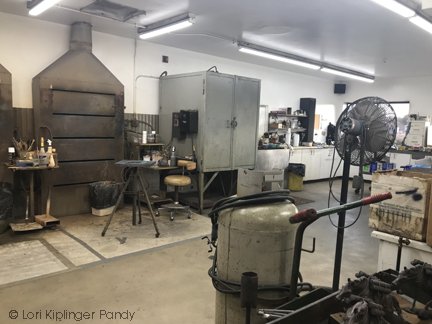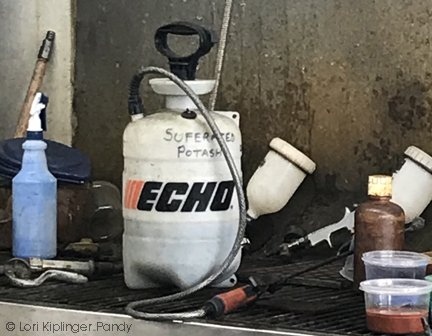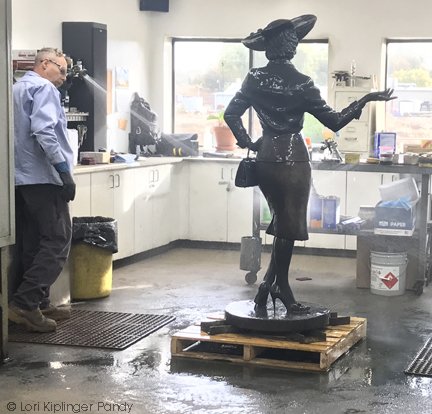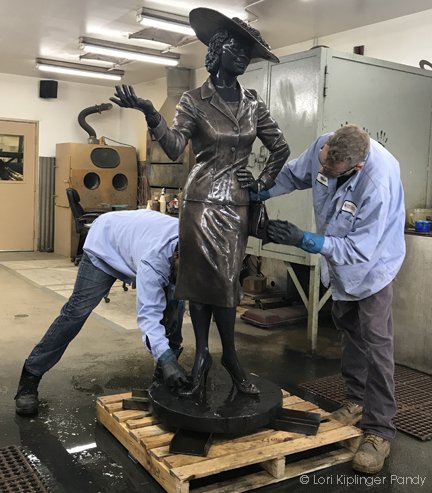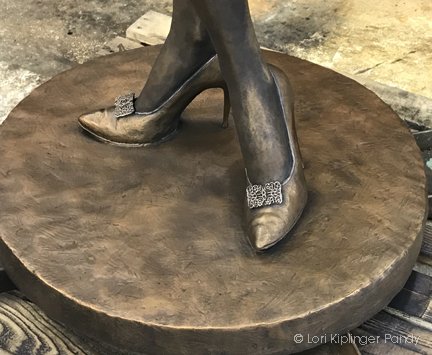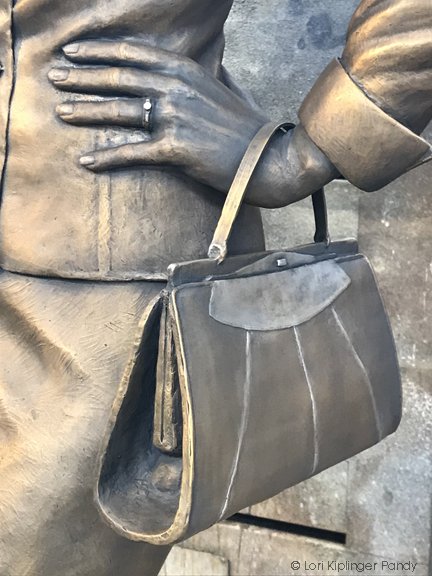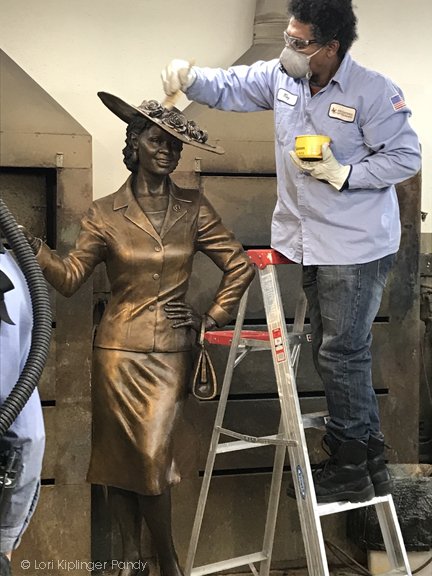FMD #56
Today is an exciting day. I was at the foundry from 7:45am to 2:30pm working with the patina team at Art Castings of Loveland to bring the metal surface of the Fannie Mae Duncan sculpture to life. We start with a final sandblasting of the metal to be sure that it clean and has a slight and even ‘tooth’ in order to accept the chemical patinas. Above is the patina room set up and ready for the sculpture to be brought in.
Just as in the maquette, the first step is the cold application of Liver of Sulfur (also known as Sulfurated Potash). The chemical is mixed and sprayed over the entire sculpture in order to turn the metal a deep near-black color.
Liver of Sulfur acts very quickly and requires no heat - it is simply a chemical reaction that quickly reacts with metals. Once the desired darkness is achieved the Liver is washed off using water to stop the chemical from reacting further.
Next, the entire sculpture is scrubbed with abrasive pads which removes the dark gray-back surface and reveals various hues of blacks, browns and grays on the higher areas - this emphasizes the forms of the sculptures by leaving the darks in the recesses.
When the desired effects of lights and darks is achieved, the sculpture is washed again and then moved over to the hot patina area for the next step.
The sculpture is buffed and any additional highlights are carefully enhanced and air compressors are used to blow any remaining dust or debris off before more patina work is done.
Just as was shown with the maquette, the entire surface of the bronze needs to be heated to just the right temperature using torches. The patina artist constantly moves around the sculpture, heating all areas to warm the metal, opening the pores and preparing it to accept the next chemical.
Once the entire sculpture is good and hot, the patina artist begins to spray on the Ferric Nitrate for the hot patina. The chemical reacts with both the metal surface and the heat and bonds instantly to the bronze creating hues of rich golds and reds. There is a wide range of color that can be achieved with a single chemical compound and the desired color is created by a balance of the underlying liver of sulfur, the ratio and mixture of the Ferric as well as the temperature and amount of Ferric that is applied to the sculpture. It’s an organic process and is subject to many conditions - simply the heat of the room, the acidity or alkaline properties of the water or the humidity of the day can all affect the outcome of the color.
With the Ferric applied smaller details are now attended too. To get more depth of value to the hair and eyes, Nate now uses an airbrush with a black lacquer paint to deepen specific areas with an expert touch.
Tiny areas are enhanced by the use of pumice pencils to bring a bit of lightness and sparkle to areas.
Once the patina is complete the entire sculpture is sprayed with a lacquer which will provide a barrier coat from rain, snow rain and atmospheric chemicals and uv light that would quickly darken and change the patina when placed outside.
The lacquer in turn is protected by a coat of wax, much like a car is protected by a coat of wax. The sculpture is again heated up and the wax is applied using large and small brushes and additional heat….then the wax is allowed to cool completely.
Finally the waxed sculpture is buffed and is polished - and ready for installation!
